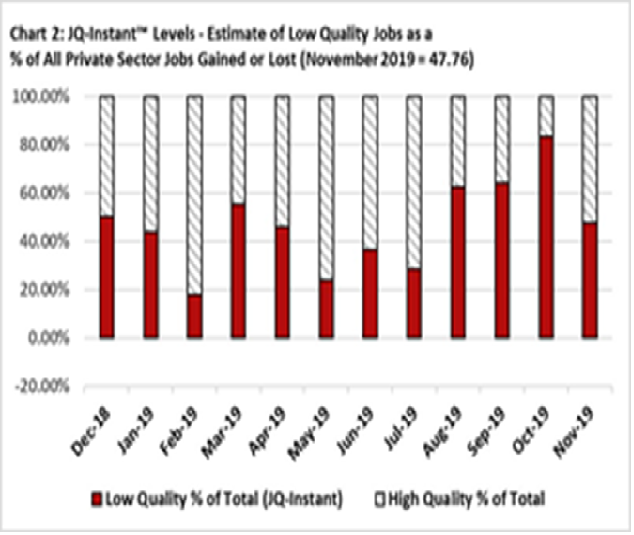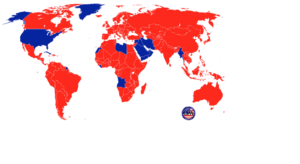As you might expect my heroes are people who have played a role in trying to alert Americans to the effects to our economy of the decimation of American manufacturing and the dangers of outsourcing manufacturing to China and other countries. These are real people and none are elected officials.
This month marks the 13th year of my journey to do what I could to save American manufacturing. In May 2007, I e published one of my periodic San Diego County Industry reports that I had been writing since 2003. I titled it, “Can U.S. Manufacturing be Saved?” My report had grown from four pages to 13 pages, and I realized that what I was documenting about the loss of manufacturers in San Diego and California was going on all over the country. That’s when I made the decision to start writing my first book, Can American Manufacturing be Saved? Why we should and how we can, published in May 2009. In the course of researching and writing my first book, my second edition of the same (2012), and my third book, Rebuild Manufacturing – the key to American Prosperity (2017), I have connected with many people who shared my concerns and were early advocates of saving American manufacturing.
My first set of heroes are those who either wrote books, articles, or newsletters that I came across researching my first book. When I was writing my reports, I was blaming the loss of manufacturing in California on the bad business climate, high taxes, and the cheap Chinese wages. These heroes expanded my knowledge greatly by showing that it was our primarily our national trade and tax policies, the trade cheating of China and other Asian countries, and corporate greed that was responsible for losing over five million manufacturing jobs between the year 2000 and 2009. In alphabetical order, my heroes are:
Michael P. Collins is author of Saving American Manufacturing, Growth Strategies for Small and Midsize Manufacturers, published in 2006 and its companion handbook, The Growth Planning Handbook. Prior to becoming a writer, he was Vice President and General Manager of two divisions of Columbia Machine in Vancouver Washington. He is President of MPC Management, a consulting company that focuses exclusively on the problems and challenges of small and midsize manufacturers (SMMs) of industrial products and services. His book is written from the viewpoint of what manufacturers can do to save themselves and grow their business. I arranged for him to come to San Diego to give a presentation to the Operations Roundtable of the American Electronic Association in 2011.
Lou Dobbs, is an American television commentator, radio show host, and the anchor of Lou Dobbs Tonight on Fox Business Network, and author of Exporting America, Why Corporate Greed is Shipping American Jobs Overseas, published in 2004 as hard cover and 2006 as a paperback. In his book, he “takes aim at the corporate executives and Washington politicians who profit by exporting U.S. jobs overseas—and shows readers what they can do to save not only their own careers, but the American way of life.
Ralph Gomory, who is well-known for his mathematical research and his technical leadership. For twenty years he was responsible for IBM’s Research Division, and then for 18 years was the President of the Alfred P. Sloan Foundation. He is the co-author with the late William J. Baumol of the book, Global Trade and Conflicting National Interests, published by MIT Press in 2001. After connecting by phone and email for years, it was nice to finally meet him at the Coalition for a Prosperous America trade conference in Washington, D. C. in 2018.
Richard McCormack, journalist and founder/publisher of Manufacturing & Technology News which he found in 1994. McCormack also served as the editor of the 2013 book on revitalizing manufacturing, ReMaking America. I read every issue of MT&N from July 2007 until it stopped publication at the end of 2016. He was also recognized as an American Made Hero by AmericanMadeHeroes.com for his newsletter “coverage of the profound financial and economic ramifications of the shift of industrial capability from the United States to Asian competitors.” He wrote “thousands of articles on outsourcing, industrial and technological competitiveness, government policies, and trends related to management, quality, technology and markets.”Mr. McCormack is currently Press Secretary and Program Manager, Office of Public Affairs, for the Department of Commerce.
Peter Kent Navarro is a Harvard Ph.D. economist and author of several books. I read his book The Coming China Wars, published in 2006, while I was researching my book. At that time, he was a professor of public policy at the University of California, Irvine. He currently serves in the Trump administration as the Assistant to the President, Director of Trade and Manufacturing Policy, and the national Defense Production Act policy coordinator. I first met Mr. Navarro when he was a professor at the University of California, San Diego and running for mayor in 1992. I also had the pleasure of seeing him when I attended the trade conference in 2018. I also read his book, Death by China, which he co-authored with Greg Autry, published in 2012.
Raymond Richman, Howard Richman (son), and Jesse Richman (grandson), authors of Trading Away our Future: How to Fix Our Government-Driven Trade Deficits and faulty Tax System Before It’s Too Late, published by Ideal Taxes Association in 2008. Raymond died in October 2019 at the age of 101. His tribute by Ideal Taxes states, he “authored four books, dozens of journal articles and hundreds of commentaries about economic development, tax policy and trade policy…Beginning with a commentary in the Pittsburgh Tribune-Review on September 14, 2003 (The Great Trade Debate), he became one of the first advocates of a policy of balanced trade, an alternative to the free trade vs. fair trade debate. His essential argument was that trade, free or not, benefits both countries if it is balanced.” I am sorry that I didn’t get to meet him before he died.
Roger Simmermaker, author of How Americans Can Buy American: The Power of Consumer Patriotism, third edition published in 2008. He also writes Buy American Mention of the Week articles for his website and World New Daily. His book provides a guide to assist American’s who wish to purchase products made in America and discusses the importance of “Buying American” for the future economic independence & prosperity of America. He earned special recognition as an American Made Hero. After years of connecting to him by phone and email, it was a pleasure to also meet him at the same trade conference in 2018.
Alan Tonelson, a Research Fellow at the U.S. Business and Industry Council Educational Foundation, and a columnist for the Foundation’s globalization website, Tradealert.org and a Research Associate at the George Washington University Center for International Science and Technology Policy. He is also the author of The Race to the Bottom, published in 2000. “He has written extensively on the trade deficit between the United States and other countries. He has also written on free trade, globalization and industrial decline. He argues that U.S. economic policy should aim for “preeminence” over other countries, just as, he believes, other countries’ economic policies seek their own national interests. He is critical of various forms of “globalism” and internationalism.”
When I was researching my first book, the U.S. Business and Industry Council was the only organization that had a written plan to save American Manufacturing.
I introduced my book as a speaker at the Del Mar Electronics Show in San Diego County, California on May 6, 2009, and had my book on display at my company’s booth at the show. One of the first persons to buy my book was Adrian Pelkus, President of contract manufacturer, A Squared Technologies. He was also the informal leader of the steering group running the San Diego Inventors Forum. He invited me to the next SDIF meeting which I attended, and then invited me to join the steering committee, which I did. After reading my book and endorsing the purpose and ideas I presented in my book, the steering committee changed the focus of SDIF from helping inventors source their products in China to sourcing the manufacture of their products in the U.S.
The SDIF meetings have an informal curriculum of topics to cover in a year, and I have been giving an annual presentation on how to select the right manufacturing processes and vendors to make their products. It has a pleasure to be able to help so many inventors and entrepreneurs source their products in America.
My connections to theses heroes led me to connections with many other people and organizations who became part of my second set of heroes after my book was published. I will write about these people in My Heroes Part Two.


